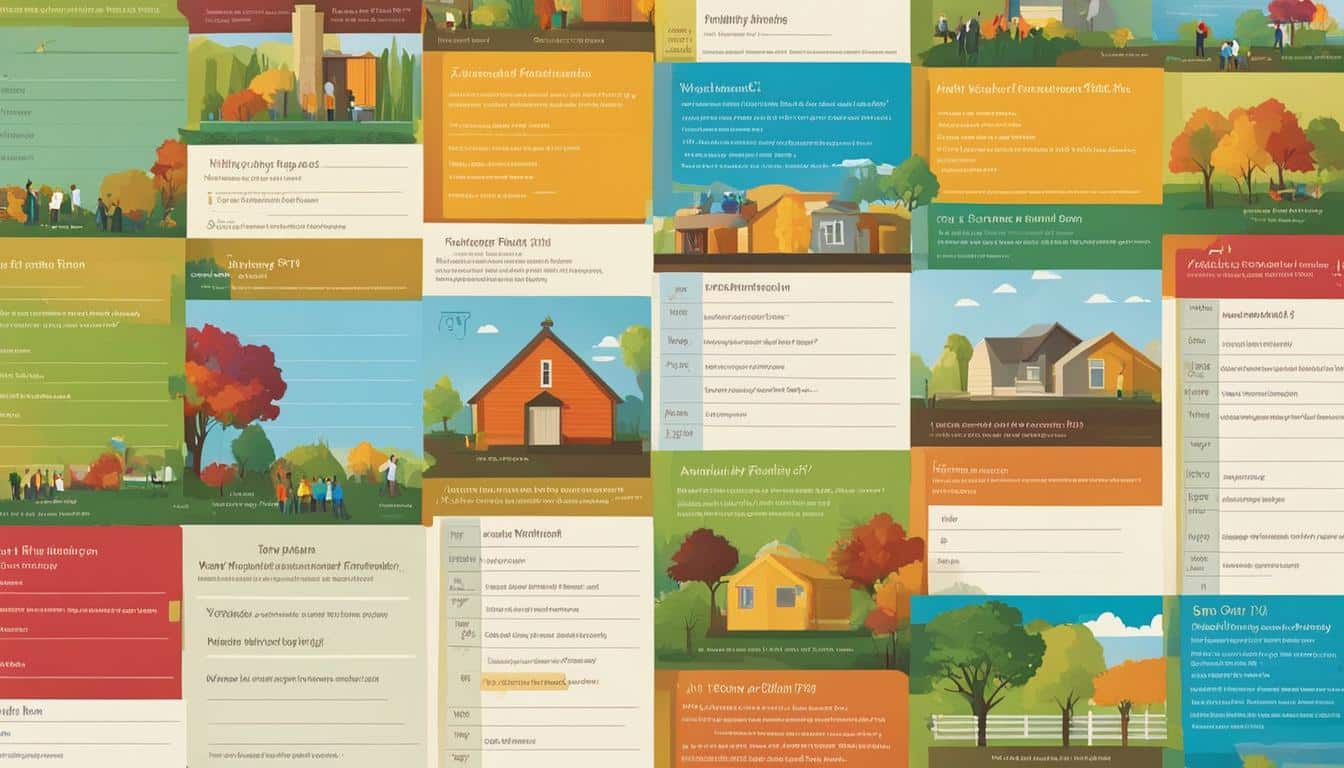Planning Memorable Family Reunions
Planning a family reunion can be a challenging endeavor, but with the right strategies and careful preparation, you can create a memorable gathering that strengthens the bonds between relatives. In this comprehensive guide, I will walk you through the entire process of planning a family reunion, offering expert tips and advice at every step. Whether you’re organizing a small intimate gathering or a large reunion, this guide will equip you with the knowledge and tools you need to ensure a successful event.
Family reunions are a cherished tradition that brings together multiple generations to celebrate shared heritage and create lasting memories. From coordinating activities to selecting the perfect venue, every detail plays a crucial role in creating a memorable experience for your family members. With careful planning and attention to detail, your family reunion can be a joyful and meaningful event that will be talked about for years to come.
Throughout this guide, I will share valuable insights on various aspects of family reunion planning, including gathering input from family members, setting a date and budget, choosing the right venue, sending invitations, planning the menu and activities, and managing the reunion day itself. By following these tips and utilizing the resources provided, you’ll be able to orchestrate a family reunion that exceeds everyone’s expectations.
Getting Input and Gathering Information
Before diving into the planning process, it’s important to involve all family members and gather their input. By sending out a questionnaire, you can discover preferences, gather important information, and ensure that everyone’s voice is heard. Establishing a reunion planning committee can also be beneficial in managing the event and delegating tasks effectively.
Setting a Date and Budget
Selecting the right date for your family reunion is paramount. By considering everyone’s availability and taking into account potential conflicts, you can ensure maximum participation. Additionally, establishing a budget is crucial to ensure financial feasibility and avoid any financial constraints later in the planning process. By determining the financing sources and allocating costs accordingly, you can plan a reunion that is both enjoyable and within your means.
Choosing the Perfect Venue
The venue you choose sets the tone for your family reunion. Depending on the size of your gathering and the preferences of your family members, you can opt for outdoor parks, hotels, banquet halls, or even destination reunions. With proper research and early booking, you can secure the ideal venue that meets all of your requirements. Don’t forget to consider backup plans and necessary permits, ensuring a smooth experience for everyone.
Sending Invitations and Managing RSVPs
Once you have a date and venue secured, it’s time to send out invitations to your family members. You can choose between traditional paper invitations or electronic options, depending on your preferences and the convenience of your guests. Creating an event website can also be helpful in providing additional details and updates. For out-of-town attendees, reserving a block of hotel rooms and providing booking information simplifies the accommodation process.
Planning the Menu and Activities
Food and activities are integral parts of any family reunion. When planning the menu, consider dietary restrictions and cater to everyone’s tastes. Whether you’re hiring a caterer or opting for potluck-style options, strive to create a diverse and satisfying menu that accommodates everyone’s needs. Additionally, plan a variety of activities that cater to different age groups and interests, ensuring that there is something enjoyable for everyone.
Delegating Tasks and Managing the Reunion
The success of your family reunion depends on effective delegation and management. By assigning responsibilities to the reunion planning committee and creating a timeline and checklist, you can stay organized and ensure that all tasks are completed in a timely manner. On the day of the reunion, designate individuals or teams to handle logistics and ensure a seamless experience for all participants.
Getting Input and Gathering Information
Before diving into the planning process, it’s important to get input from all family members. By involving the entire family in the planning process, you’ll ensure that everyone’s needs and suggestions are taken into account. Here are some steps to help you gather information and preferences for your family reunion:
1. Family Reunion Questionnaire
Start by creating a family reunion questionnaire to gather important information and preferences. Design the questionnaire to cover key details such as:
- The number of attendees
- Preferred dates
- Age range of attendees (to determine if the reunion will be family-friendly or adults-only)
- Preferred location (indoor or outdoor)
- Desired activities or themes
- Preferences for accommodation options
- Dietary restrictions or special considerations
Consider using online survey tools like Google Forms or SurveyMonkey to easily collect and organize responses.
2. Reunion Planning Committee
Establish a reunion planning committee consisting of enthusiastic family members who can dedicate their time and efforts to coordinating the event. The committee can help manage the overall planning process and delegate specific tasks, ensuring that the workload is distributed evenly.
“By involving the entire family in the planning process, you’ll ensure that everyone’s needs and suggestions are taken into account.”
Having a dedicated planning committee allows for effective collaboration, better organization, and timely execution of plans. Assign specific roles and responsibilities to each member, such as budget management, venue research, activity coordination, or communication with vendors.
3. Sharing and Analyzing the Data
Once you’ve collected the questionnaire responses and gathered input from the reunion planning committee, it’s time to analyze the data. Look for common themes, preferences, and suggestions that can help shape the overall event.
Compile the data into a comprehensive report or share it with the planning committee to discuss the findings and make informed decisions. This collaborative approach ensures that the family reunion reflects the desires and interests of the entire family.
| Benefits of Getting Family Input | Tips for Creating a Reunion Planning Committee |
|---|---|
|
|
Setting a Date and Budget
Selecting the right date for your family reunion is crucial. Start discussing potential dates at least a year in advance to allow family members to plan their schedules accordingly. Take into consideration school breaks, holidays, and other events that may conflict with the reunion. By choosing a date well in advance, you’ll increase the chances of maximum attendance and ensure that everyone has enough time to make necessary arrangements.
Once the date is set, it’s equally important to establish a budget for the event. Financial planning for reunions is essential to ensure that the celebration remains affordable for all family members. Begin by determining who will be financing the reunion and whether costs will be split per person or per family. Consider discussing the maximum per person price that family members are willing to contribute to ensure transparency and avoid any financial burdens.
When setting a budget, it’s crucial to consider both fixed and variable expenses. Fixed expenses may include venue rental, transportation costs, and accommodation, while variable expenses may include food, decorations, and activities. It’s advisable to allocate a separate portion of your budget for unexpected expenses or contingency plans.
Choosing affordable venues and activities can help you stay within your family reunion budget. Consider alternative options such as local parks or community centers, which may offer lower rental prices compared to traditional event venues. Additionally, explore free or low-cost activities that can still provide enjoyable experiences for your family members.
Financial planning for reunions may involve making difficult decisions or compromises, but it’s crucial to keep the celebration inclusive and accessible to all family members. By discussing the budget openly and involving everyone in the decision-making process, you can ensure that the family reunion remains a memorable and enjoyable event for everyone involved.
| Expense | Estimated Cost |
|---|---|
| Venue Rental | $1,000 |
| Transportation | $500 |
| Accommodation | $1,500 |
| Food | $1,200 |
| Decorations | $300 |
| Activities | $500 |
| Total | $5,000 |
Choosing the Perfect Venue
The choice of venue can greatly impact the success of your family reunion. When selecting a location, it’s important to consider the size of your gathering and the preferences of your family members. Here are some popular venue options to consider:
- Parks: Outdoor venues such as parks provide a beautiful and spacious setting for your family reunion. They offer ample space for activities and games, and the natural surroundings create a relaxing and enjoyable atmosphere.
- Hotels: Hotels are a convenient option for family reunions, especially if you have out-of-town guests. They often have dedicated event spaces that can accommodate large groups, and some hotels even offer discounted room rates for your guests.
- Banquet Halls: Banquet halls provide a versatile and customizable space for your reunion. They can be decorated according to your theme and offer amenities such as catering services and audiovisual equipment.
- Beach: If you’re looking for a more casual and fun-filled reunion, consider hosting it at the beach. The beach offers a picturesque backdrop and a variety of activities for all ages, from swimming and beach volleyball to building sandcastles and enjoying a picnic.
If you’re planning an outdoor reunion, it’s crucial to have a backup plan in case of inclement weather. Consider renting a tent or finding an indoor venue nearby that can accommodate your group.
To ensure you secure the best venue for your family reunion, make sure to:
- Reserve the venue well in advance to secure your desired date and availability.
- Gather quotes from multiple options to compare prices and amenities.
- Check local regulations and obtain any necessary permits for your event.
By carefully considering the venue options and planning ahead, you can create a memorable family reunion in a location that suits everyone’s needs and preferences.

Sending Invitations and Managing RSVPs
Now that you have secured a date and venue for your family reunion, it’s time to send out invitations to all your family members. Depending on your preference and convenience, you can choose between traditional paper invitations or electronic invitations through platforms like Evite or Punchbowl. The most important aspect is to ensure that all relevant information is included in the invitation.
If you opt for paper invitations, be sure to include the date, time, location, and any special instructions for the event. You can also add a personal touch by including a heartfelt message or a family photo to make the invitation more memorable.
On the other hand, electronic invitations offer convenience and flexibility. You can easily customize the design, add interactive elements, and track RSVPs online. Include all the necessary details in the invitation, such as the event date, time, location, and any additional information that your family members need to know.
In addition to invitations, creating an event website can be highly beneficial for your family reunion. This website can serve as a centralized platform where family members can find additional details about the event, such as the schedule, accommodation options, and any updates or changes. It provides a convenient way to communicate with attendees and keep everyone informed throughout the planning process.

For family reunions that require travel, reserving a block of hotel rooms can simplify the accommodation process for attendees. By securing a hotel room block, you ensure that there are rooms available in close proximity to the reunion venue. Include the hotel information and booking instructions in the invitation or on the event website to make it easier for your family members to make their reservations.
Managing RSVPs is an important aspect of the planning process. Keep track of the responses you receive and follow up with family members who haven’t responded. This will help you estimate the number of attendees and plan accordingly for seating, food, and activities.
Tips for Sending Invitations and Managing RSVPs:
- Choose between traditional paper invitations or electronic invitations through platforms like Evite or Punchbowl.
- Include all relevant information in the invitation, such as the event date, time, location, and any special instructions.
- Create an event website to provide additional details and updates to family members.
- Consider reserving a block of hotel rooms to make accommodations easier for attendees.
- Keep track of RSVPs and follow up with family members who haven’t responded.
By sending out thoughtful invitations and effectively managing RSVPs, you’ll ensure that your family reunion is well-attended and organized, creating a truly memorable experience for everyone involved.
Planning the Menu and Activities
Food is a crucial element that brings families together during a reunion. To create a truly memorable experience, it’s important to plan a menu that caters to everyone’s tastes and dietary needs. Take into consideration any allergies or restrictions family members may have when selecting dishes. Whether you choose to hire a caterer or utilize the facilities of the venue, communicate your requirements clearly to ensure a successful dining experience.
If you’re working within a budget, there are creative options to consider. One idea is to organize a potluck-style meal, where each family contributes a dish. This not only reduces costs but also adds a personal touch to the menu. Another cost-effective option is DIY catering, where family members take turns preparing meals. This approach can foster a sense of participation and inclusion, allowing everyone to showcase their culinary skills.
Now that the menu is taken care of, it’s time to plan the activities that will keep everyone entertained and engaged. A variety of activities ensures there’s something for everyone, regardless of age or interests. Consider including games and sports that encourage friendly competition and teamwork. Outdoor activities like scavenger hunts, relay races, and volleyball are popular choices. If your reunion is held indoor or you’re dealing with inclement weather, board games, card tournaments, and arts and crafts activities can be a hit. Additionally, live entertainment such as a band, DJ, or even an open mic session can add excitement to the event.
“Planning activities for a family reunion requires thoughtful consideration of the attendees’ preferences. Remember to choose a mix of active and more laid-back options so that everyone can participate at their own pace. Don’t forget to create opportunities for bonding and reminiscing—activities that encourage storytelling and sharing family memories can be a highlight of the reunion.” – Emma Johnson, Event Planner
By combining a delicious menu with a comprehensive range of activities, you’ll ensure that your family reunion is a memorable and enjoyable experience for all. The key is to create an atmosphere that fosters connection, laughter, and lifelong memories. So, get ready to indulge in mouthwatering dishes and embark on exciting adventures as you celebrate the bonds that tie your family together.
Delegating Tasks and Managing the Reunion
Organizing a successful family reunion requires effective delegation and management. By assigning specific tasks to the reunion planning committee and volunteers, you can ensure that all necessary responsibilities are taken care of. This collaborative approach will help streamline the planning process and make the event run smoothly.
Establishing the Reunion Planning Committee
Forming a family reunion planning committee is an essential step in managing the event. This committee will be responsible for overseeing the entire planning process and ensuring that all tasks are completed on time. It’s important to select committee members who are committed, organized, and have good communication skills. By pooling the skills and talents of different family members, you can create a dynamic team that will work together to make the reunion a success.
Assigning Responsibilities
Once the reunion planning committee is established, it’s time to assign specific responsibilities to each member. Some possible duties include:
- Find and book a suitable venue for the reunion.
- Coordinate with vendors, such as caterers, photographers, and entertainers.
- Purchase decorations and supplies for the event.
- Plan and organize various activities and games.
- Design and distribute reunion invitations.
- Manage RSVPs and keep track of attendees.
- Create a reunion checklist and timeline to ensure everything is completed on schedule.
By dividing these responsibilities among committee members, you can ensure that every aspect of the reunion is well taken care of. Regular meetings and communication among committee members are crucial to keep everyone updated on progress and address any challenges that may arise.
Managing the Reunion Logistics
On the day of the reunion, it’s important to have a designated person or team in charge of managing the logistics. These duties may include:
- Setting up and decorating the venue.
- Coordinating transportation for attendees who may need assistance.
- Preparing and serving meals or coordinating with caterers.
- Ensuring that all planned activities and games run smoothly.
- Handling any last-minute changes or issues that may arise.
- Communicating with vendors and troubleshooting any logistical challenges.
Having a dedicated team to handle these tasks will help alleviate stress and ensure that the reunion proceeds according to plan. Clear communication and effective coordination among the team members are essential for a successful event.
“Delegating tasks and managing the reunion through a planning committee and volunteers is key to making the event a memorable and enjoyable experience for all family members.” – [Your Name]
Conclusion
Planning a family reunion requires careful organization and preparation, but the effort is worthwhile when you see the joy and connection it brings to your family members. By following the tips and advice in this guide, you can create a memorable and successful event that will forge lasting bonds and create cherished memories for years to come.
Remember to communicate with your family, involve them in the planning process, and prioritize their preferences and needs. By keeping everyone informed and engaged, you’ll ensure that the reunion caters to everyone’s interests and fosters a sense of belonging.
With proper planning, your next family reunion will be an unforgettable experience. Whether it’s through engaging activities, delicious food, or simply spending quality time together, the bonds created during these gatherings will endure. So start planning today and create a celebration that will bring your family closer than ever before.
FAQ
How can I get input from all family members when planning a family reunion?
Start by sending out a family reunion questionnaire to gather information and preferences. It may also be helpful to establish a reunion planning committee to manage the event and delegate tasks.
When should I start discussing potential dates for a family reunion?
Start discussing potential dates at least a year in advance to allow family members to plan their schedules accordingly.
How do I select the right venue for a family reunion?
Consider the size of your gathering and the preferences of your family members. Popular venue options include parks, hotels, banquet halls, and the beach.
Should I send paper invitations or use electronic invitations for a family reunion?
Consider whether to send traditional paper invitations or opt for electronic invitations through platforms like Evite or Punchbowl. Include all relevant information such as date, time, location, and any special instructions.
How can I plan a delicious and satisfying menu for a family reunion?
Consider dietary restrictions and allergies when selecting dishes and communicate any special requests to your caterer or venue. Explore potluck-style options or consider DIY catering to stay within a budget.
How should I delegate tasks and manage the family reunion?
Delegate tasks among the reunion planning committee and volunteers. Assign responsibilities such as finding a venue, booking vendors, purchasing decorations, and coordinating activities. Create a timeline and checklist to stay organized.
What is the key to planning a successful family reunion?
The key to planning a successful family reunion is to communicate with your family, involve them in the planning process, and prioritize their preferences and needs. With proper planning, your reunion will create lasting bonds and cherished memories.






